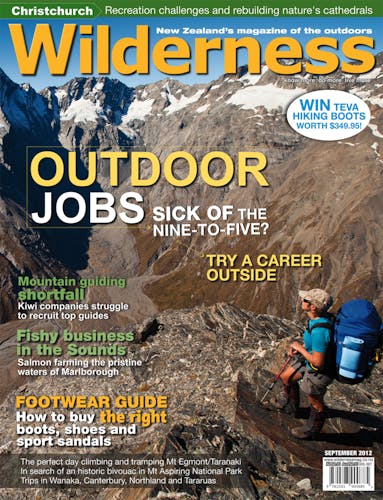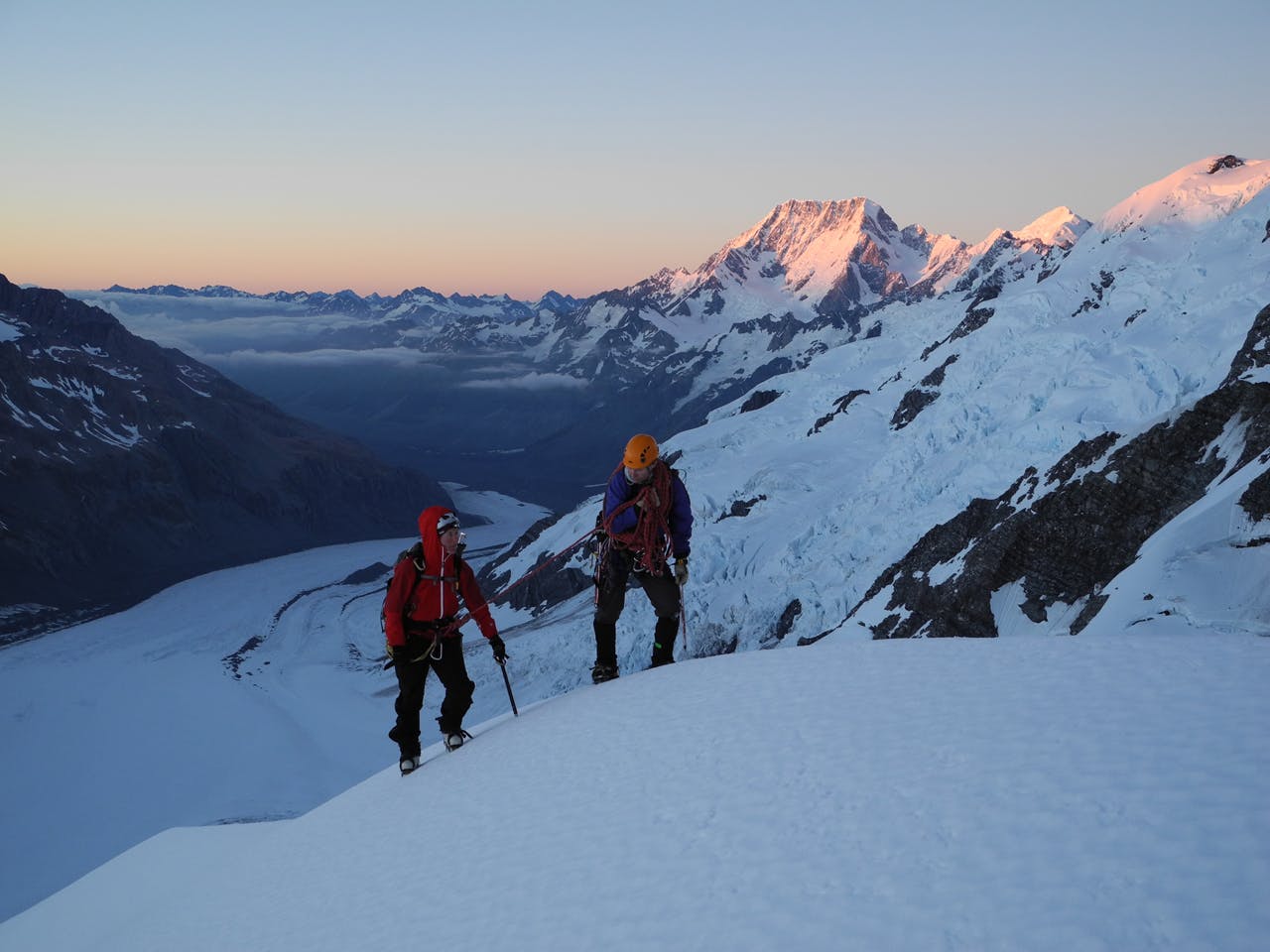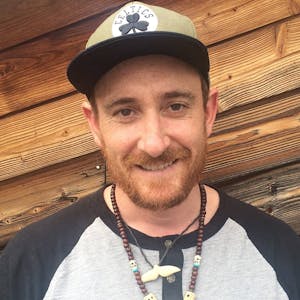Taking people mountain climbing for a living may sound swell, but Josh Gale discovers New Zealand has a shortage of professional mountain guides for good reason
Professional mountain guide Mike Roberts’ had a close brush with death while leading a client up the most dangerous section of Mt Everest.
Half way up the Khumbu Icefall (5486m) a massive series of crevasses began collapsing around them. “The ice was churning and the collapse literally stopped at our feet,” Roberts says.
“The client on this occasion, and I’ve seen this before, wasn’t aware of how close that call was.”
Roberts has led eight guided expeditions to Everest during his 15 years as a professional mountain guide and has taken his clients to the summit six times.
Given the terrain and altitude he works in, Roberts has been in remarkably few dangerous situations. If mountain guides are any good, and want to stay in the game, they must excel at planning a safe return.
Roberts is currently leading a guided expedition to 4884m Carstensz Pyramid, one of the ‘seven summits’, which juts out of the jungle of Indonesia’s West Papua province.
As a guide, he’s climbed all over the world, earning a living while travelling and climbing some of the most iconic and exotic peaks on the planet. All at someone else’s expense.
It sounds like a dream job – the sort of gig you imagine hundreds of intrepid young mountaineers fighting tooth and nail to get into.
But despite the apparent adventure and glamour, the truth is only a hardy few want the job. Even Roberts is growing weary of it and in the near future intends to reduce the number of international expeditions he guides each year.
On average he’s done five trips a year for the last 14 years and the only reason he’s been able get away with it is by remaining single.
“When I was young I used to get completely absorbed in the bubble of the expedition life and was quite happy losing myself in it,” Roberts, 50, says. “Now I find myself slightly resentful about the amount of time it takes me away from family, friends and doing other things.
“For me, the idea of being able to have a stable relationship in a home situation is an important factor.”
Roberts works for Wanaka-based Adventure Consultants whose director Guy Cotter is struggling to find an able and committed pool of qualified climbing guides willing to take on international expeditions over the long term.
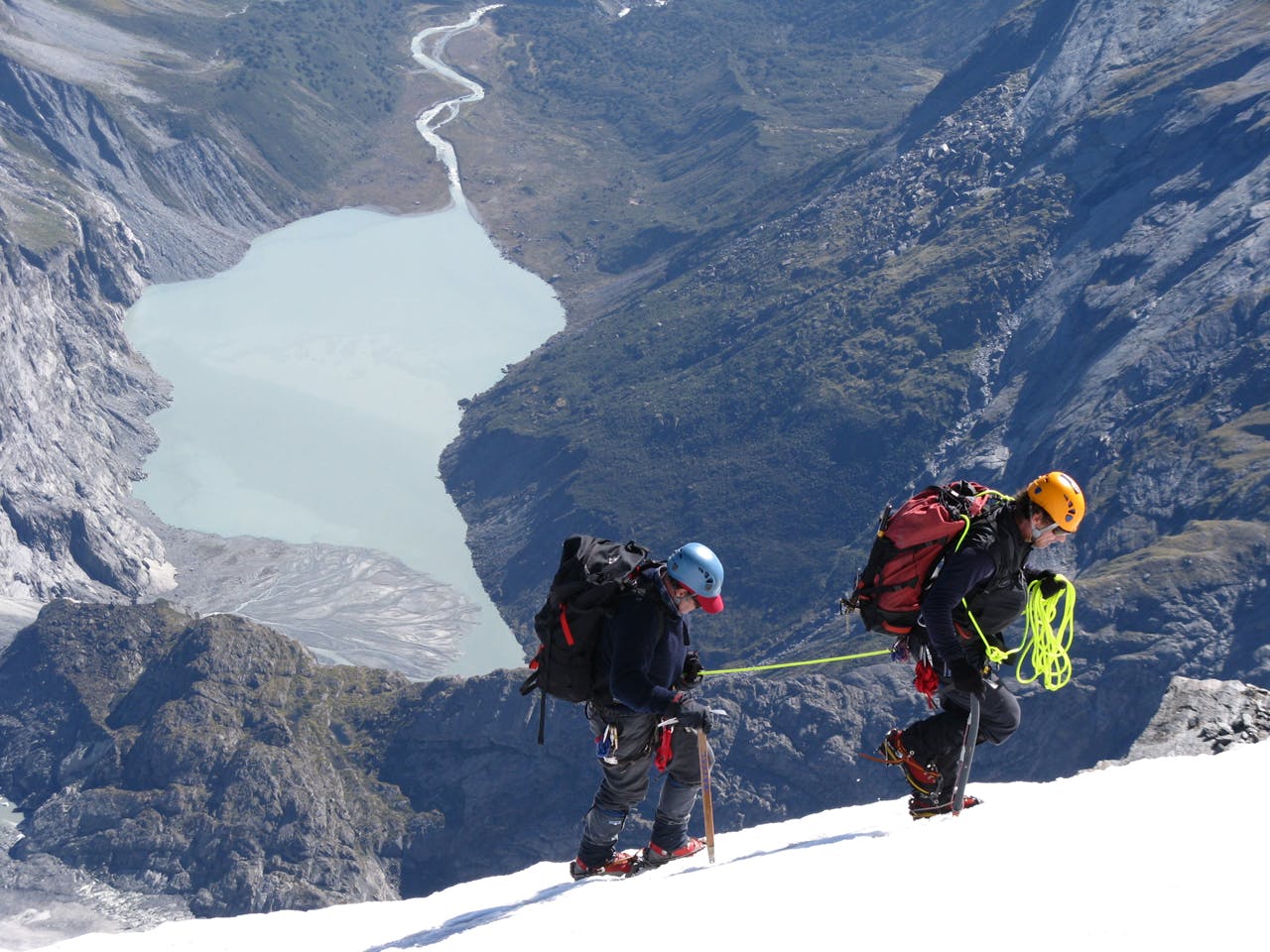
In New Zealand it takes five years to become a fully qualified mountain guide. Photo: Josh Gale
Like Roberts, he couldn’t get enough of guiding as a young man and can’t fathom why there aren’t more guides wanting to build a career in one of the most exciting jobs in the outdoors.
It’s not just a shortage of expedition guides Cotter is concerned about, however, but also a lack of new blood qualifying as climbing guides for work in New Zealand.
Unless something is done to increase the number of new climbing guides coming through, Cotter says it’s likely companies like his will become more dependent on the many foreign guides eager to work here.
“In other countries there seems to be a good stream of [climbing] guides coming through, but New Zealand probably doesn’t have enough of a well-known guiding culture to make it an option for people looking for a career,” Cotter says. “We’re often developing guides, but we’re finding down the track they might not stay on the career path.
“I do believe that in mountain guiding, as opposed to ski guiding, the physical and mental intensity of the work puts a lot of people off [and] many of those who are in the [outdoor] industry are looking for positions that have a lower level of impact on their bodies than what a lot of [climbing] guiding demands and therefore shy away from trips that have long hard days.”
Unlike Europe, where there’s good access to the mountains, guiding in New Zealand requires more approach time carrying heavy loads which is taxing on the body. Most trips here last between six to 10 days.
To become a professional mountain guide it’s compulsory to go through the New Zealand Mountain Guides Association’s (NZMGA) training programme which is based on the standard of the International Federation of Mountain Guides Association (IFMGA). Being a fully qualified mountain guide means achieving IFMGA recognition.
Before you can even enrol for the five years of training, you must first serve a personal apprenticeship in the mountains for a minimum of three years and prove yourself skilled in your chosen pursuit.
In other words, weekend warriors need not apply – mountain guiding, as the NZMGA website states, is a “serious profession” that takes serious commitment.
There are currently 44 fully qualified IFMGA recognised guides in New Zealand, but a few of those are now retired and some mostly work overseas. There is an additional 80 people training to become fully qualified mountain guides, up from 20 in 2002.
By comparison, in France there are 1425 fully qualified working guides, another 250 fully qualified guides who are no longer working and about 115 people training to become mountain guides. Given France’s total population is more than 16 times greater than New Zealand’s, the number of guides training here doesn’t seem too bad. Per capita, there are far more guides in training here than in France.
However, Cotter points out New Zealand’s reputation for producing top level mountain guides means many Kiwi guides choose to work abroad.
It’s also NZMGA’s winter ski guiding courses which are popular rather than its summer climbing courses.
NZMGA training officer Trevor Streat says he doesn’t think the industry is losing work because enough guides can’t be found, though he would like to see more climbing guides entering the training pathway.
“Climbing guiding is a pretty singular career path, you need to be quite dedicated and there’s very little security, so it’s not strange Generation Y aren’t beating a path to the door,” he says. “Ski guide courses are well subscribed and last winter we had to run two due to high demand.”
Many guides in the industry compare the process of becoming a guide to that of becoming a doctor; it takes time, money and dedication.
Recently, the NZMGA tightened rules on how long someone can take to become a guide to a strict time frame of five years.
NZMGA vice president Sean Brooks says that time can be reduced to around four years if someone is highly skilled and motivated.
To undertake all of the courses required to become IFMGA qualified costs around $22,500, but add in the cost of lost earnings while undertaking training courses and assessments and the true cost is closer to $30,000.
However, Brooks says one advantage of NZMGA’s training programme is that once guides have passed the first summer or winter course they can start working as an assistant guide, thus avoiding “racking up a monumental student loan”.
If the cost still sounds too much, IFMGA guide Bill Atkinson puts it into perspective: “It’s much cheaper than doing a master’s degree, but if your attitude is focused on how much money it will cost you to become a mountain guide, then you will not survive the guiding.”
The money side of guiding is one of the main factors that led guide Andrew Finnigan to give away the profession. He guided for Lake Tekapo-based Alpine Recreation over five summers, but the 30-year-old guided his last clients in March and is now managing car parks in Dunedin for Wilsons Parking.
He began mountaineering in his early twenties and was attracted to the combination of the physical, intellectual and social aspects of the pursuit.
Soon after finishing university, he became dissatisfied with his nine-to-five and took a sabbatical to focus on climbing and eventually got a job guiding on the Franz Josef Glacier.
After working there for a year, he went to Peru to climb and when he came back he landed a job with Alpine Recreation guiding the Ball Pass route.
Finnigan completed three out of six NZMGA courses and was fortunate that Alpine Recreation paid for two thirds of his course fees, a rarity in the industry.
However, it wasn’t enough to keep him in the game.
“The top of the tree income-wise for guiding is pretty much the bottom of the tree where I am now,” says Finnigan, who has a degree in engineering. “I’ve moved into something I knew nothing about and I’m making more money, learning and being challenged more than I was in the guiding industry.”
Mountain guides start on about $250 a day, which sounds good, but because the average number of days guides work is about 80 over summer and 50 over winter, it works out to around $32,500 a year.
Guy Cotter agrees most guides live “on the poverty line”, earning between $25,000 and $35,000. However, top level guides who take on big international expeditions as well as doing summer and winter guiding can earn around $70,000.
“Guiding doesn’t pay that well considering the risk, the time and money it takes to get qualified and the impact being absent has on your personal life,” Cotter says. “If they get into more lucrative deals such as film work or good Antarctic contracts they can earn double [$70,000] but that would be rare.”
However, Cotter and Sean Brookes both say it’s a great time to get into guiding because there is a greater variety of work available, including instructing for polytechnics, running winter avalanche courses, doing rope access work and working on high rise buildings. There are also plenty of opportunities for guides to work in Europe where the pay rates are higher than in New Zealand.
“There’s the potential for work year around without necessarily the need to be in the mountains the whole time,” Brooks says. “It’s a pretty wonderful opportunity for Kiwis to get into – it can take them around the world.”
To bump up his earnings, Finnigan worked up to 110 days during his five summer seasons guiding, but found that presented its own problems – namely being away from his partner.
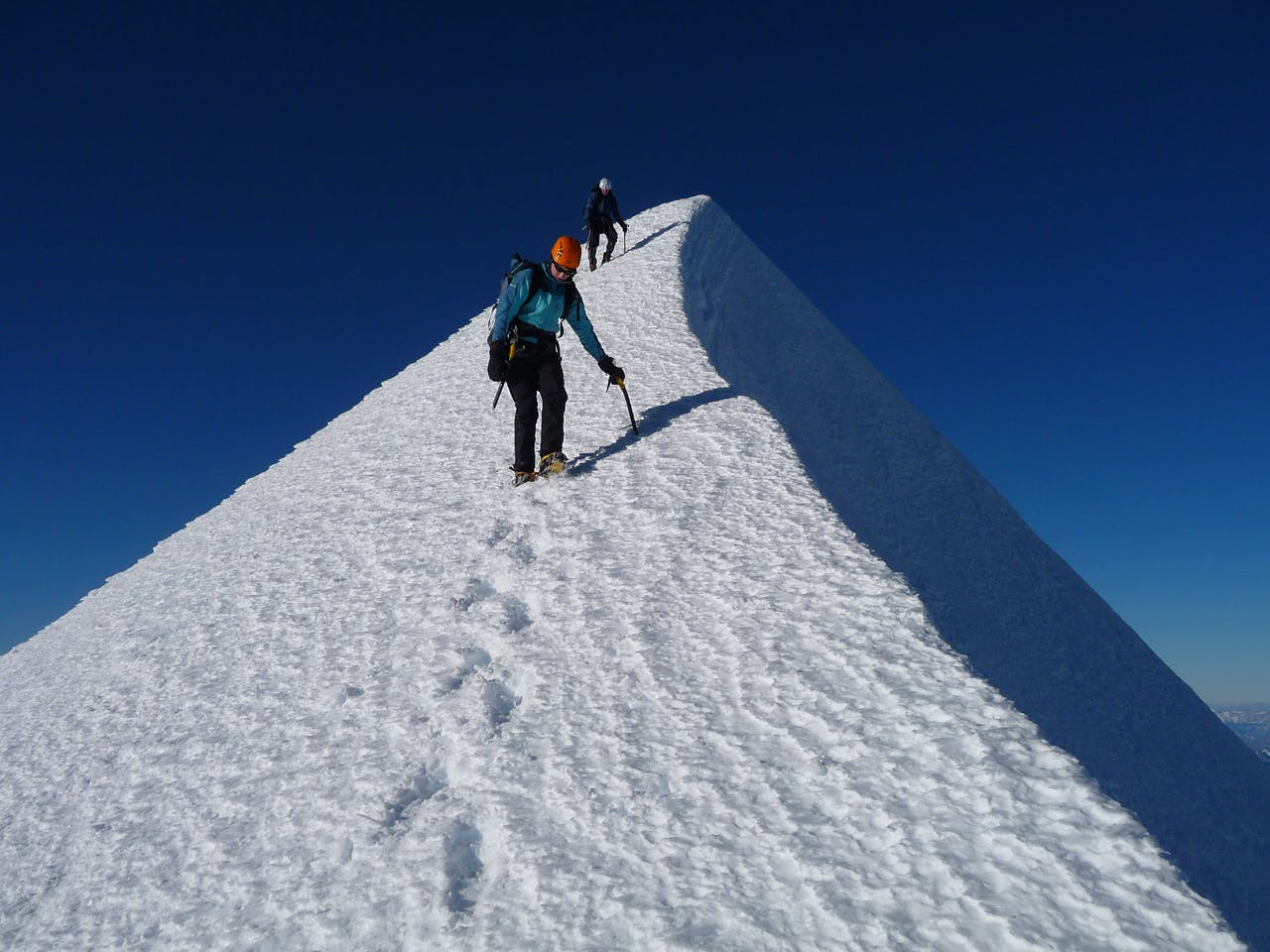
Guides need hard skills as well as possessing a range of personality traits – empathy being the most important
“If you think about CEOs or people in high [paying] jobs and the amount of travel they do, they probably don’t do anywhere near as much travel as guides do.
“It means there were 110 nights I was travelling, out of touch and away.”
Not only is it difficult maintaining a relationship, but staying in touch with friends and family, being involved with a community or being a member of a sports team is next to impossible, says Finnigan. His main social interactions were with his clients which he describes as a “weird experience” because he got close to many of them through conversation, but found he couldn’t remember their name a week later. “There was a weird loneliness to it,” he says.
However, it was the clients that made Finnigan stick with the work for five years. Most were successful people, some high profile corporate and political leaders, who he says taught him more than he taught them.
“You meet some amazing people and you spend some really quality time with them,” he says.
Sean Brooks says this is also one of the many reasons he’s enjoyed being part of the profession. “Working as a mountain and ski guide over the last 21 years has given my life incredible depth through meeting amazing people I’ve had in my care and shared the mountains with.”
Twizel-based guide Jane Morris, 38, is currently going through NZMGA’s training programme and has managed to get by only because she started later in life with savings behind her.
“For someone in their twenties working out what they want to do with their life, guiding is a big commitment,” she says. “If I was 22 and trying to do this it would be really challenging.”
Many guides, she says, have trades to keep them afloat financially. Sean Brooks, for example, is a builder.
Morris may have paid the bills, but she experienced another common problem many guides face: burnout. To make enough money to have a life, many guides cram in an as much work as they can until, eventually, they burn out or end up with mountain avoidance syndrome.
In February this year, Morris, a single who describes herself as “married to the mountains”, was in hospital for five days with pneumonia.
She’d been packing in the work and got a severe cough. Rather than taking a break she “did a couple of cold days up the Tasman” and two back-to-back multiday trips.
“I went down like a sinking ship,” Morris says. “I wasn’t building in enough recovery time between trips and when I think about it now, it seems ridiculous because I was completely useless for three months.”
Guide Mike Rowe has also had his battles with the hardships of the job. Like his friend Andrew Finnigan, he has also given away guiding because of the low pay and because it interfered with his personal climbing ambitions; working as a guide over the summer season gobbles climbing time that could be spent on more ambitious, challenging ascents.
While fitting in personal climbing trips is another common challenge guides face, Finnigan doesn’t “buy the theory” and says he just changed the type of personal climbing he did.
“Guiding is generally moderate stuff involving lots of walking and a little bit of climbing so when I was on my own time I did as little walking as possible and lots of climbing,” he says.
Mike Roberts believes there’s one other reason that explains why there’s a shortage of young people becoming mountain guides: a spate of deaths in the industry.
In 2004, when an avalanche killed his friends Paul Scaife and Dave Hiddleston, one other guide and a client on a climb of Mt Tasman, Roberts was walking just far enough behind to survive the accident. The tragedy shocked him and he gave the mountains a wide berth for a couple of months.
Other fatalities include Rob Hall and Andy Harris who died on Mt Everest in 1996, Dave McNulty, Will McQueen and others.
“I don’t know what the statistics are, but the number of deaths relative to the size of the industry is terrible,” Roberts says. “I think we were at a point where we were averaging a death every two years – it was just appalling.
“The industry’s making a huge effort to be as safe as it can; it’s just been a really bad run for whatever reason. It’s a dangerous industry if you look at it statistically.”
As a result, Roberts says it’s common for the friends and family of guides to pressure them to give it up.
Some guides cope with the danger and accidents by being “hard arsed and bloody minded”, but the majority eventually end up questioning what they’re doing.
“There’s one guide I know whose wife is a doctor and she [diagnosed] him as having post traumatic stress disorder,” Roberts says. “I would say I might have even suffered from a bit of that myself.”
Sean Brooks acknowledges the work can be dangerous. He says New Zealand’s mountains are more challenging than other parts of the world due to unstable rock, steep glaciers, maritime weather conditions and strong winds.
He believes Kiwi guides are trained to a high standard and it’s hard to determine what was behind the spate of deaths. He says every accident is a learning opportunity and there’s been no fatalities in the last three years.
Mountain guiding is hard yakka, dangerous, tough on relationships and won’t make you rich – so why do it? Guy Cotter says mountain guiding is a lifestyle and a profession.
“To do it well you have to take a professional approach, but you cannot sustain it unless you love the mountains and helping people reach their goals,” he says. “Many mountaineers are only focussed on their own experience and their own goals and have no empathy to help others learn skills.
“Guiding attracts people who are generous enough to do this.”
Mountain guide character test
It takes more than fitness, strength and climbing skills to become a mountain guide. Personality is a key ingredient, too. Here are some of the most important attributes required:
- Empathy: All the top New Zealand guides say this is the one quality every guide must possess. Many say being able to perceive and connect with what clients are going through is nearly more important than climbing skills.
- Patience: Guides Jane Morris and Elke Braun-Elwert say this is one quality women generally have in greater supply than men. Not all clients are fit, not all are trusting and guides need to have patience if the pace is slow or they’re being bombarded by a million questions.
- Humour: Heading into the mountains with a stranger can be awkward for clients and guides. The ability to break the ice and create rapport through humour is important.
- Generosity: Being a mountain guides requires a lot of giving of yourself. Trips last between six and 10 days and to sustain that level of giving you have to be generous person.
- Calmness: Even the best plans can be scuttled and not all clients are easy to deal with. Calmness helps guides stay focused in unexpected and challenging situations.





